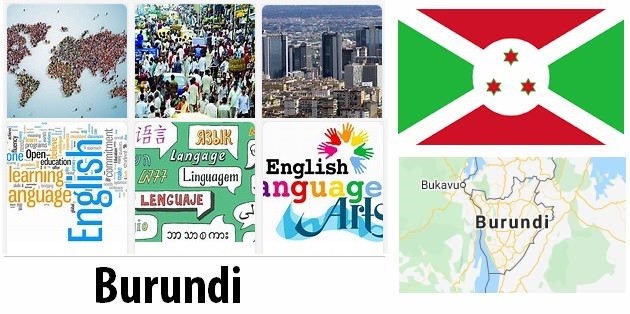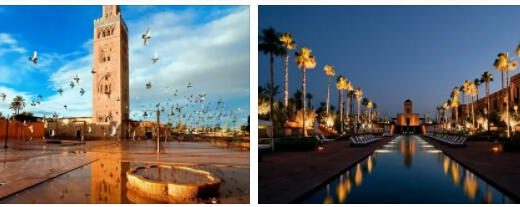Nigeria Overview
Nigeria is located in West Africa, on the Gulf of Guinea, bordering Benin, Cameroon, Niger and Chad. Nigeria is Africa’s most populous country. The country’s largest river, Niger, flows into the Bay of Biafra via an extensive delta. The main branch flows through six countries, with tributaries from a few more. In Africa, only the Nile and the Congo River are larger.
| Capital: | Abuja |
| Biggest city: | Lagos |
| State: | republic |
| Language: | English |
| Religion: | Islam. Christianity |
| Surface: | 923 768 km² |
| Population: | 173.6 million (2013) |
| Population density: | 161 residents per km² |
| Expectancy: | 47 years |
| Illiteracy: | 32% |
| Currency: | naira (NGN) 1 naira = 0.02 kr |
| GDP per capita: | $ 2,400 (2010) |
| Time difference: | +0 hours |
| Electricity: | 210/250 V AC, 50Hz |
| National Day: | 1 October |
| Country area code: | 234 |
| 2-Letter country abbreviation: | NG (See more abbreviations on Abbreviationfinder) |
| Business: | service sector 51%, agriculture 45%, industry 4% |
| Climate: | tropical in the south with rainy season from April to October; desert climate in the north |

The earliest known civilization in what is today Nigeria was the Nok people, who lived from 500 to 200 BC. maintained an Iron Age culture on the Jos Plateau. Between the 700s and 800s AD. Northeastern Nigeria was part of the Kanem-Bornu Empire. It was here that Islam in the 1000s was introduced in Nigeria. Between Kanem-Bornu and the great empires of Songhai and Mali lay seven city-states, including Kano, Zaria, Gobir, and Katsina. The Hausa people were the region’s foremost traders and their language spread across northern Nigeria.
During the 13th century, the nomadic people immigrated to the Fulani from the west. These people gradually grew both numerically and in terms of strength, and by the beginning of the 19th century the city-states had been taken over, after winning the jihad proclaimed by Imam Usman dan Fodio. Under pressure from the Fulani, the Kanem-Bornu empire collapsed in the 1840s. The Fulani also established the Sultanate of Sokoto. From here, Islam spread south into the forested Yoruba country, where the Yoruba people in the 14th century created the mighty kingdoms of Benin and Oyo.
At the end of the 15th century, first Portuguese and then Dutch, French and English settled in the coastal areas as slave traders. Mighty chiefs sold a large number of Yoruba and Ibos slaves to strangers. In 1807, Britain banned the slave trade, forcing both natives and Europeans to trade in goods, especially palm oil. The slave trade, however, did not cease until the middle of the century.
In 1861, Britain annexed Lagos and the entire coast of Nigeria was made a British protectorate in 1885, after the Europeans divided Africa among themselves at the Berlin Conference.
In 1886, the British The Royal Niger Company was formed to conquer and exploit the region. In 1899, the British government took control of northern Nigeria and made the area a protectorate. Nigeria now began to take shape, and in 1906 Lagos and the Protectorate of Southern Nigeria merged. In 1914, the Protectorate of Nigeria was united north and south.
After the world wars, Nigerian nationalism, inspired mainly by the Ibo people, increased. Many years of negotiations followed between the British government and three Nigerian parties: the Northern People’s Congress (NPC), the Action Group (AG) and the National Citizens’ Council (NCNC). It was agreed that Nigeria would become a parliamentary federation and in 1959 parliamentary elections were held. The NPC gained its own majority but still chose to co-govern with the NCNC.
In 1960, Nigeria became independent. The new state was a federal state with extensive autonomy in three, later four, regions. However, this did not mean that the old contradictions between the parts of the country ceased. The people in the northern parts of the country, where political power was concentrated, harbored distrust of the people in the south, and these in turn considered the Islamic Hausa-Fulani peoples to be reactionary and hinder Nigeria’s development. Ibos and Yoruba did not trust each other either. The igniting spark came in January 1966, when some young Ibo officers overthrew the federal government in a military coup and General Ironsi became head of state. A few months later, he himself was assassinated in a new coup and was replaced by Christian General Yakubu Gowon. Between 10,000 and 30,000 residents were killed, and about 1 million fled the region.
In June 1967, Colonel Odumegwu Ojukwu declared the Eastern Region (Ibo) an independent state, Biafra, with its capital in Enugu. This led to a violent civil war, which lasted 196770. It is not known for sure how many died during the war, but probably exceeded one million. The war was one of the most tragic events in Africa’s recent history. The ensuing famine disaster received a great deal of international attention. In January 1970, Biafra was forced to give up its independence and Ojukwu was forced to flee to the Ivory Coast.
Following the collapse of Biafra, a number of countries organized a major relief program in the fight against hunger and distress in the area. When the war ended, the plans for the 12 states were realized, and Biafra became one of them. Economic and political reconstruction continued under the leadership of Gowon and with the support of a strong increase in oil production, which placed Nigeria among one of the world’s largest leading oil producing countries. President Gowon was overthrown in 1975 in a military coup. After four years of military rule, general elections were held in 1979 and a civilian government was re-established. President became Alhaji Shagari, leader of the main right-wing and pro-Western national party.
A new constitution was adopted in 1999. The transition to civilian rule was completely undramatic. The new government has major tasks ahead of it, including rebuilding the economy devastated by corruption and neglect and ensuring that the long-standing ethnic and religious differences in the country can be bridged.
Nigeria’s population consists of over 250 different peoples and tribes, each speaking their own language or dialect. The three main groups are hausa-fulani in the north, yoruba in the west and ibo in the east. Some other ethnic groups are: ljaw, kanuri, ibibio and tiv.
There are many languages in the country. The three largest are Hausa, which occur mainly in the north, Yoruba in the south and Ibo in the southeast. In addition, more than 200 other languages. If you include more distinct dialects, you get up to 300 different ones. The official language of the state administration is English.
WORLD HERITAGE
The following objects in Nigeria are listed as a UNESCO World Heritage Site.
The year in which the item was added to the list is indicated in parentheses.
- The cultural landscape in Sukur (1999)
- Osun-Osogbo, sacred forest at Osogbo (2005)
ELECTRICAL OUTLET
Electricity and electrical outlets in Nigeria
Voltage: 240 V
Frequency: 50 Hz
Type of plug: D, G
Need an adapter: Yes, Swedes need an adapter.
CLIMATE AND WEATHER
Weather in Abuja
| Climate | Jan | Feb | Mar | Apr | May | Jun | Christmas | Aug | Sep | Oct | Nov | Dec |
| Average temperature °C | 28 | 29 | 30 | 29 | 27 | 26 | 25 | 25 | 25 | 26 | 27 | 27 |
| Day °C | 34 | 36 | 37 | 36 | 33 | 31 | 29 | 28 | 30 | 32 | 34 | 34 |
| Night °C | 20 | 23 | 24 | 25 | 23 | 22 | 22 | 22 | 21 | 21 | 19 | 19 |
| Rain (mm) | 3 | 5 | 13 | 61 | 137 | 175 | 206 | 218 | 239 | 99 | 3 | 0 |

Abuja
According to Countryaah, Abuja is the capital of Nigeria, and is located 500 km northwest of Lagos. The city has 778,567 residents (2006). Abuja was founded in 1828 and was named the capital in 1991. Government institutions and authorities have gradually moved here, but Lagos is still the country’s economic and administrative center.
Benin City
Benin City is a city in southern Nigeria, located on the Benin River and inhabited since the 10th century. It is the administrative capital of the state of Edo and has 1.1 million residents (2006). The city was the capital of the Kingdom of Benin.
Ibadan
Ibadan is a city in southwestern Nigeria, and is the administrative capital of the state of Oyo. It is the country’s third largest city with 1.3 million residents (2006) and 2.3 million residents in the metropolitan area. The city is home to Nigeria’s first university, the University of Ibadan, with a large library, university hospital and several research institutions.
Kano
Kano is the second largest city in Nigeria, with 3.8 million residents (2007). It is one of the ten most populous cities in Africa, and is an important center for trade in local agricultural products. In the old town is the country’s largest mosque. In the 12th century, Kano was the capital of a kingdom of the same name.
Lagos
Lagos is Nigeria’s largest city, with 7.9 million (2006). This makes Lagos the second most populous city in Africa, after Cairo in Egypt. Until 1991, Lagos was also the capital of Nigeria, but was then replaced by Abuja. Lagos is Nigeria’s most important port city. The city’s premier business center is located on Victoria Island.
Onitsha
Onitsha is a city along the Niger River in southeastern Nigeria. It is the largest city in the state of Anambra and has about 500,000 residents (2006). Onitsha is a significant port city and an important industrial and commercial center in the region. By the city there is a bridge over Niger, and the river connects the city with Port Harcourt, Bururu and Warri.
Onitsha was founded in the 16th century by immigrants from the Kingdom of Benin and later became the capital of the Kingdom of Ibo. Britain established a trade office on the site in 1857 and in 1884 Onitsha came under British colonial rule. The city is today the seat of the obin of Onitsha, the leader of the Ibo people.
Port Harcourt
Port Harcourt is a city located in the Niger Delta in southeastern Nigeria. It is the administrative capital of the state of Rivers and covers the two districts of Port Harcourt and Obio / Akpor. The metropolitan area has 3.7 million residents (2007).


